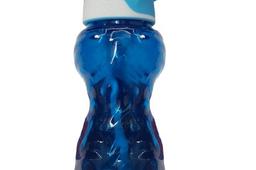Vivid Materials Part 2- How should I use them?

Our previous vivid tutorial discussed the expanded capabilities and applications of the new vivid materials.
Among the things we mentioned were expanded color selection, increased control over color selection, increased automation in color proofing, brighter whites, smoother color gradients, and of course, transparency and vividness. We explained how this enables applications like rapid prototyping for transparent parts, Perspex® imitations, and transparent vividness for parts like toys and light covers.
This tutorial covers the technical specs and explains how to use them to print opaque and transparent parts.
-
Step 1: Which printers and materials are compatible with the vivids?
The vivids are compatablie with the Stratasys J750™/J735™ and Connex3 printers.
The table below describes which printers work with which specific colors and Support materials:
-
Step 2: How do I print the vivid materials?
1) Open GrabCAD Print.
2) Go to Print Settings> Change Materials.
3) In the Tray Materials window, click Remove All to empty the tray:
4) Select all the materials you will need:
A) Select all the Veros with the suffix “-V”. Those are your vivid materials.
B) Select VeroPurewhite™ and VeroBlackPlus™.
C) Then, click Save.
5) Insert your model or VRML file into GrabCAD Print.
6) Assign colors to your model with the Color Picker. (VRML files will already have colors pre-assigned).
7) Print as usual. Get a feel for how the vivid materials look and feel.
-
Step 3: How do I achieve transparency with the vivid materials?
For transparency, load the tray with STL files only. If you use VRML, that will assign a white core to the part and result in an opaque part.
Also, do not use the Color Picker to assign colors to transparent parts. That will mix in some non-transparent materials and make the level of transparency hard to predict.
Instead, select the pre-set digital materials (DMs) menu.
Each DM color combination will yield different colored results.
· For red vivid transparent parts, go to the DM dropdown menu and choose Magenta and Yellow.
Then, hover over each color to get a description. Choose the one that says Strong Red.
· For orange vivid transparent parts, choose the one that says Vivid Orange.
· Try the different DMs to see the diferent color options.
Note that the colors seem opaque in the Color Picker window. Not to worry, they will come out transparent in real life.
EDIT JULY 29 2019: We have uploaded color swatches of each Vivid DM to the GrabCAD Library so that you can see each one's color and transparency in real life before printing a model.
https://grabcad.com/library/polyjet-vivid-materials-intensity-demonstrator-1
https://grabcad.com/library/agilus30-clear-vero-vivid-dm-swatch-1
https://grabcad.com/library/dm-swatches-1
https://grabcad.com/library/connex-triangles-1
-
Step 4: How do I achieve opacity with the vivid materials?
You can print opaque parts with the vivid color materials by doing one of the following:
Method 1: Print a VRML file.
By default, VRML adds a white core under the vivid-color material. This core provides the opacity.
Method 2: Use a coating layer (for STL files).
Use VeroPureWhite for the model color and apply a coating of vivid materials.
Model settings:
Coating settings:
Use a thickness of between 0.3 mm and 3 mm for the coating.

The thickness plays a big part in the color’s appearance. In the vivid color swatch featured below, we used the exact same vivid material and applied increasing amounts of coating (in millimeters) for each little square.

The color swatch held up against thin air instead of a white background:

Method 3: Use an STL file and print the part in two separate shells, a white core and a colored coating to go on top of it.
In the CAD software you used to create your STL file, separate the part into shells: create an internal shell that is made of VeroPureWhite, and an outer coating that will be comprised of the vivid materials.
To sum up, the 3 methods for printing opaque vivid parts are as follows:
-
Step 5: How do I achieve vibrancy with the vivid materials?
Remember that thicker parts will be less transparent. But they will also feature brighter, more vibrant colors. So, keep this tradeoff in mind when determining how you want the part to look.
A color swatch of the vivid materials in various thicknesses:

Held up in the air to see the difference in transparency level:

Held up against a window instead of a white wall to get a slightly better look at the transparency level and vibrancy:

If you want parts that are transparent and highly vibrant you will need to adjust wall, coating, or part thickness until you find the most suitable settings for your needs.
Likewise, parts with varying thickness at different points will result in varying depths of color and opacity. If you need a part with consistent color and translucency, keep thickness uniform throughout.

Did you achieve the 3D print you wanted with the vivid materials?
Check out our blog on 3D color printing and keep an eye out for our future tutorial on hue, saturation, and brightness for a better understanding of 3D color printing.














